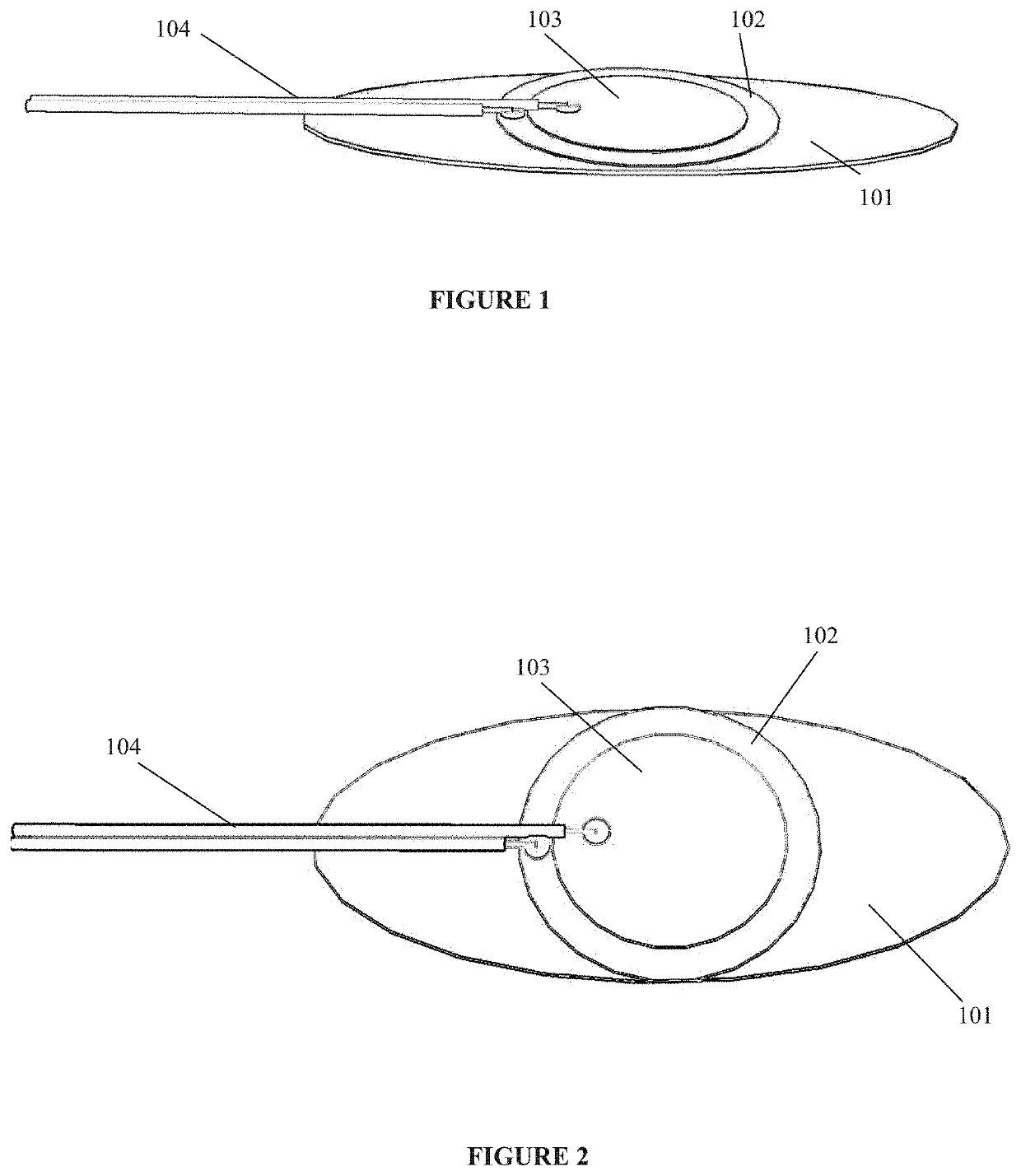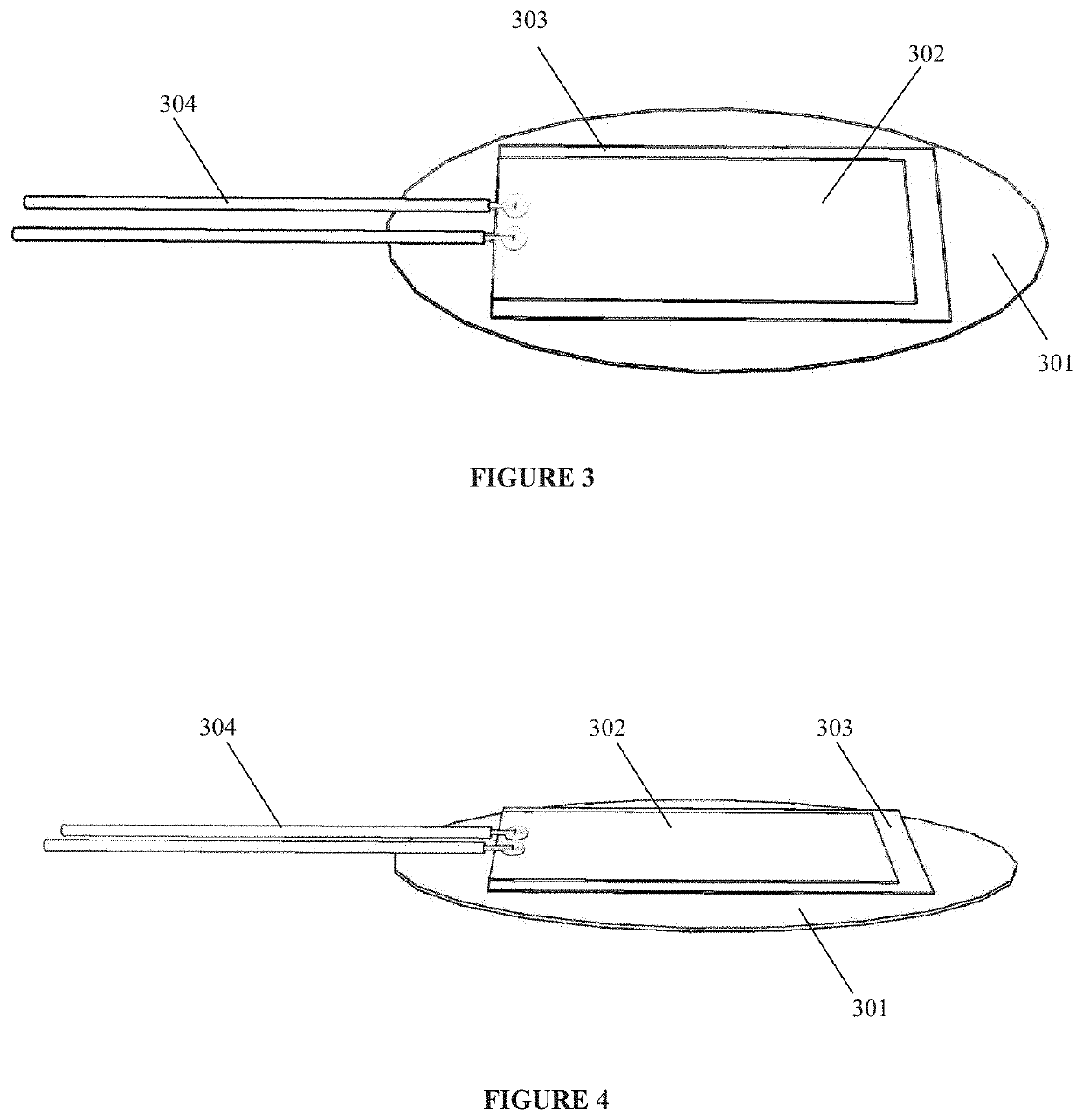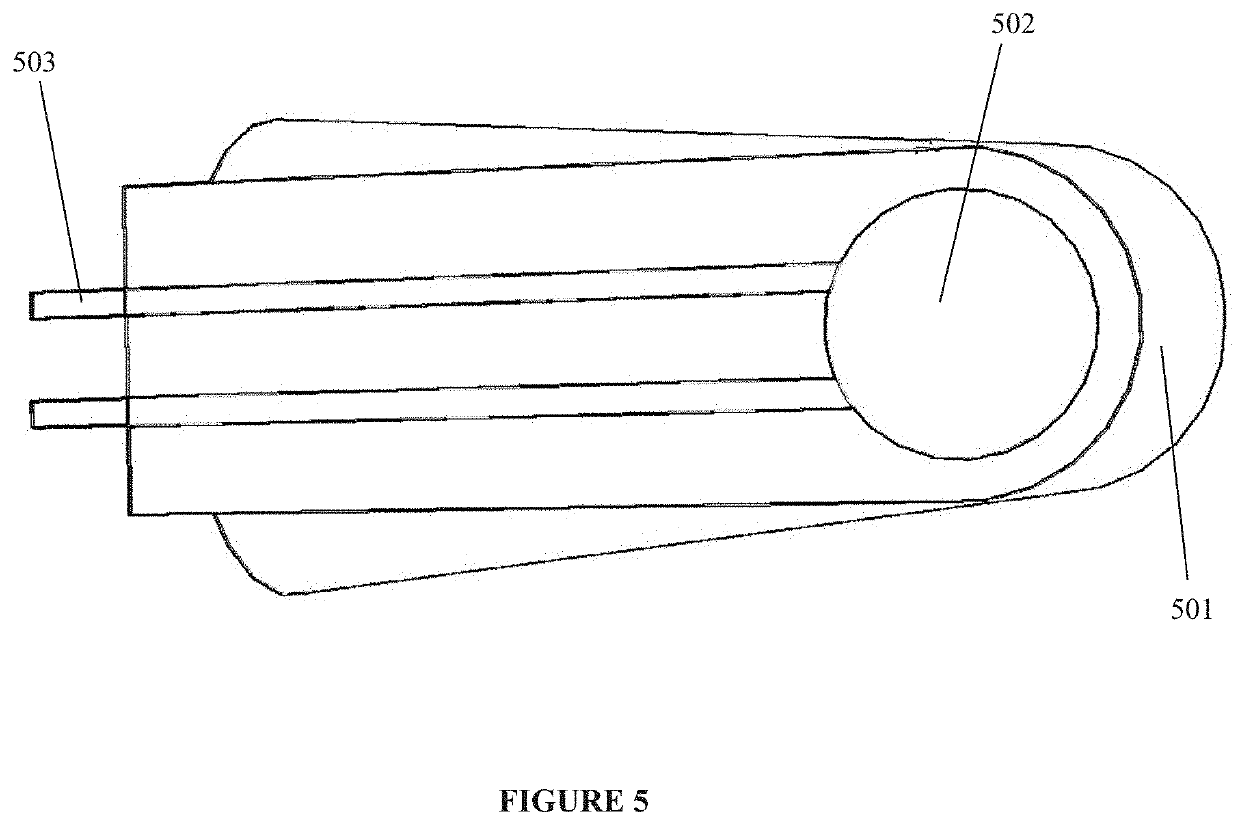Sensor and apparatus for measurement of muscle activity in the detection and treatment of Bruxism Disorder
a sensor and muscle technology, applied in the field of detection and treatment of bruxism disorder, can solve the problems of biofeedback devices, little evidence of robust efficacy for any particular treatment, and minimal symptoms
- Summary
- Abstract
- Description
- Claims
- Application Information
AI Technical Summary
Benefits of technology
Problems solved by technology
Method used
Image
Examples
Embodiment Construction
[0041]The invention of a bruxism detection and biofeedback device can be constructed using three variations of the sensor apparatus. We will discuss these sensor variations and optimal placement of these sensors in the text below. The “Sticky Piezo Disc Muscle Sensor”, the “Sticky Piezo Film Muscle Sensor” and the “Force Sensitive Resistor In-Ear Sensor” described below all work to detect physiological changes wearer (user, patient, individual being sensed) exhibits during clenching or grinding activity.
[0042]The apparatus and methods described below can also be used for Apnea and Snoring. By placing a sensor on the bottom part of the ear next to the jaw bone, the sensor is able to detect when the jaw is open or closed, therefore, detecting the movements involved in apnea and snoring activities.
[0043]The Sticky Piezo Disc Muscle Sensor (FIGS. 1, 2, 16 and 17) is comprised of a piezoelectric disc 102, 103, mounted on an elongated, thin, rigid, but flexible plastic material 101. The r...
PUM
 Login to View More
Login to View More Abstract
Description
Claims
Application Information
 Login to View More
Login to View More - R&D
- Intellectual Property
- Life Sciences
- Materials
- Tech Scout
- Unparalleled Data Quality
- Higher Quality Content
- 60% Fewer Hallucinations
Browse by: Latest US Patents, China's latest patents, Technical Efficacy Thesaurus, Application Domain, Technology Topic, Popular Technical Reports.
© 2025 PatSnap. All rights reserved.Legal|Privacy policy|Modern Slavery Act Transparency Statement|Sitemap|About US| Contact US: help@patsnap.com



